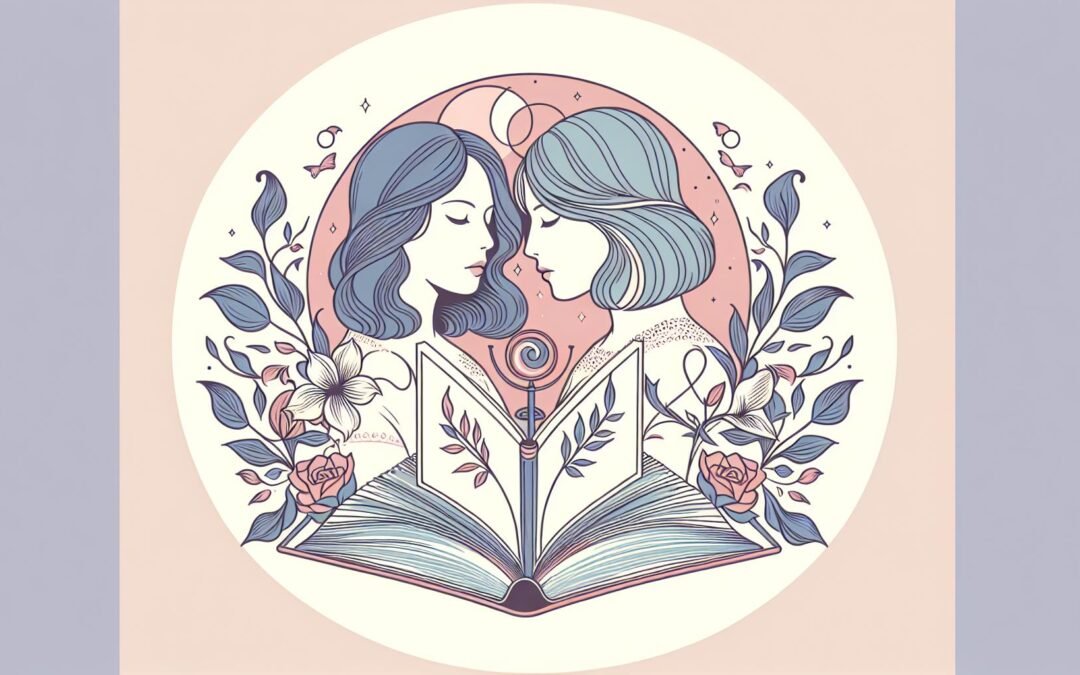Lesbian poetry spans centuries, threading bold, hidden, and luminous voices into the tapestry of global verse. Early texts shrouded intimate longing beneath symbolism: a violet here, a secluded grove there. Sappho’s lyric remnants from ancient Greece shimmer with emotional nuance, inspiring generations while intensifying the mystery inside absent lines. Later eras, shaped by surveillance and censorship, nudged poets to cloak passion, fashioning coded language and veiled metaphors. These strategies of ambiguity interlace tightly with the tradition’s evolution. Exploring love poetry and lyric secrecy, the shifting poetics reveal a heritage of longing, resilience, and transformation.
Historical Currents in Lesbian Poetry
Societal mores and legal prohibition charged the act of writing with both danger and purpose, requiring inventive forms of self-concealment and self-discovery. Under the threat of exposure, poets shaped original means of expression: indirection, ambiguity, and fragmentation flourished alongside personal risk. The emergence of women’s presses and liberated print culture in the twentieth century catalyzed public assertion, as poetic visibility became both a celebration and an act of resistance. The digital era’s international reach has since broadened the terrain of lesbian expression among poets, amplifying solidarities through instantaneous connection.
Early Coded Verses and Symbolic Intimacy
In archaic Greece, Sappho’s fragments illuminate the intensity of desire between women. Her images—violets, apples, the golden moon—veil intimate attachment, yet transmit unmistakable emotional force to sympathetic readers. These codes provided a subversive vocabulary for future poets, carrying through Victorian England’s heavily censored atmosphere. Christina Rossetti, acclaimed for devotional restraint, selected floral imagery and delicate private correspondence, weaving layers of implied affection. Emily Dickinson’s elliptical constructions and secret missives magnetize scholars seeking glimmers of queerness in unconventional syntax and pronoun games. For more on her distinctive style, see Emily Dickinson poetry.
Constraint, Censorship, and Poetic Adaptation
Legal and social constraints have pressed lesbian writers into inventive solutions. Criminalization, censorship, and the penalties for perceived deviance etched urgency into poetic form. Sapphic longing passed through oblique references, absent names, vanished lovers. In France, Renée Vivien refashioned Symbolist motifs to shelter same-gender desire while cultivating ambiguity. As the twentieth century dawned, artists sought fresh ways to articulate identity, negotiating visible and invisible boundaries through lyric innovation. Details about other traditions, including Coleridge’s “Christabel”, reveal similar dynamics of forbidden longing and code.
Voices Across Time: Key Figures
From Sappho’s apostles on Lesbos to the cosmopolitan networks of Natalie Clifford Barney, bold poetic currents flow. H.D. injected modernism with mythic and erotic revision, refusing conventional rules. Audre Lorde created a powerful template for Black lesbian verse, using eroticism as self-definition and collective weapon. Adrienne Rich navigated intimacy, politics, and legacy through formal innovation, securing the sonnet and sequence for new meanings. Later figures expanded the field—Dionne Brand’s fragmented lyric, Chrystos’s blending of Indigenous identity and sexuality, and Pat Parker’s protest-centered confessionals confirm that form and voice mirror a shifting sociopolitical reality.
Visibility, Affirmation, and Digital Horizons
Changing eras shape exposure and acceptance. The social ferment of the 1970s, fueled by lesbian feminism and gay liberation, inspired poets to declare identity openly, founding literary communities and presses. Print and performance built new networks of solidarity, mediating shared experience and advocacy. Now, digital sharing and instant publication drive fresh participation, connecting poets globally. For new expressions of lesbian love poems, web platforms both archive legacy and foster experimentation in real time.
Themes, Subjectivities, and Poetic Techniques
The pulse of lesbian poetry arises from lived longing, passionate resistance, and reclamation of voice. Thematic wealth and stylistic ingenuity render the tradition both familiar and surprising. Focusing on body, intimacy, community, and identity, poets transform lyric into testimony, exploration, and possibility, engaging all available registers of metaphor, structure, and rhythm. Echoes of these concerns can be traced in the poems about sisters love tradition, revealing intersections of kinship and queer resilience.
Eroticism, Longing, and Self-Discovery
Desire infuses the verse, with erotic metaphor and tactile lyric marking boundaries and transgressions. Poets like Judy Grahn and Monique Wittig foreground the unruliness of passion, converting private sensation into world-making. At the center: the body as scene of intimacy, vulnerability, and delight. Erotic epistolary exchanges, confessional outbursts, and lush natural imagery conspire to subvert repression and to kindle recognition. Classic forms of rhyming poetry about love provide intertextual resonance, echoing lyric strategies across diverse traditions.
Identity, Community, and Chosen Family
The work of self-making and disclosure anchors coming out narratives from the confessional style of Eileen Myles to cyclical reconsiderations of belonging. Solidarity emerges as vital theme, shaping collective imaginaries beyond heteronormative kinship. Audre Lorde and Minnie Bruce Pratt, among others, construct sisterhood and chosen family within the poem’s architecture, blending repetition, echo, and shared voice. These structures mirror wider strategies among those who find affirmation through art, challenge, and presence. To encounter more on personal connection, visit goodnight poems for her.
Intersecting Lines: Race, Gender, Power
Interwoven with questions of sexuality are tensions marked by race, class, gender, and dis/ability. Lorde, Parker, and Chrystos all thread the lyric with conflicts and solidarities shaped by lived complexity. Code-switching, vernacular innovation, and hybrid structures refuse simplistic readings, insisting on layered experience. This multiplicity ensures that lesbian poetry continually resists assimilation, instead creating restless new vocabularies and relational forms. Border-crossing of style and story can also be seen in the Russian love poetry tradition.
Resistance, Agency, and Activism
Writing as intervention reshapes lyric purpose. Rich’s pivotal “Twenty-One Love Poems” seizes canonical forms for new subjectivities, while June Jordan fuses protest with intimate address. Syntax becomes a field of dissent, the sequence a radical act. These poets transform private assertion into public dialogue, revealing the inseparability of love and defiance.
Form and Innovation in Lesbian Poetry
Innovation animates the landscape, as lesbian poets press inherited forms into service for concealed and revealed meanings. Shifting uses of space, visual metaphor, and musical repetitions generate texts that move beyond traditional lyric boundaries, continually working to embody marginalized senses of self and collectivity. For an overview of form and technique, reference free verse and related approaches within the wider poetry canon.
Experimentation and Embodiment
Avant-garde strategies, including fragmentation and concrete construction, address the urgency of self-invention. Dionne Brand, Jeanette Winterson, and others shatter continuity, refusing closure and challenging chronology. These disruptions mirror ruptured or threatened histories, while also evoking desire for connection and legacy. Visual layout, spatial juxtapositions, and the absence of closure open the page to fresh meaning.
Metaphor, Symbol, and Secret Language
Metaphor serves as both cloak and invitation. The garden, mirror, or sealed letter invents an idiom of duality: overt yet secretive. Coded language creates safe passage for meaning, conferring both protection and depth. Bonnie Zimmerman’s pioneering scholarship catalogs recurring devices, yet the lived stakes of concealment are best felt in the poem’s unfolding. To explore metaphor’s role in lyric, review relevant trends in metaphors in poetry.
Feminist Lineages and Intertextual Dialogue
Collaborations and citations infuse lesbian poetry with intergenerational dialogue. Sappho’s fragments enter direct conversation with H.D., Rich, and Lorde, while modern voices remix myth, legend, and the contemporary moment for new relevance. Influences extend outwards: formal devices from various poetic schools are adapted, recharged, or transformed. The merging of genre, the destabilization of lyric “I,” and the inclusion of eco-poetic and political registers enliven the form, ensuring future growth.
Allusion, Adaptation, and Community Memory
Literary allusion and playful homage allow poets to locate themselves in wider traditions. H.D.’s mythic rewritings or Dionne Brand’s collage-like assembly both sustain historical memory and foster creative rupture. Digital platforms and print anthologies alike host these ongoing debates: a chorus of memory, resistance, and invention shapes the horizon. Community builds not only through likeness but through difference, dialogue, and the sustained performance of recognition.

